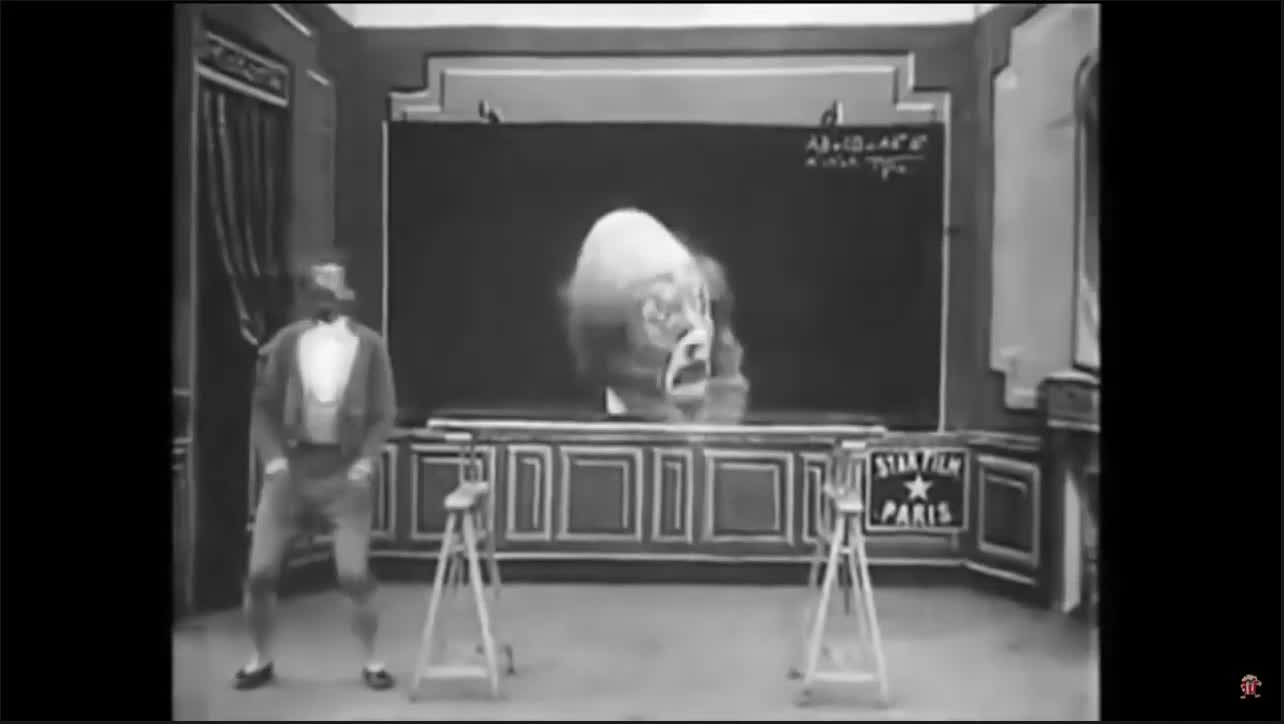Premium Only Content

L'oeuf du sorcier ou L'oeuf magique prolifique c.1902 : The first special effects in film
The turn of the 20th century saw a much needed injection of modern filmmaking thanks to the work of experimental French filmmaker, set designer, and magician George Méliès, widely regarded as the innovator of special effects in movies. Méliès’s penchant for illusion and stage magic played a vital role in the way he approached his early movies, with a desire to transfer the whimsy witnessed in theaters to film. Méliès is credited with innovating the first split screen, the first double exposure and the first dissolve effect.
After being mesmerised by the Lumière brothers’ groundbreaking moving picture camera, the cinematograph, in 1895 Méliès set about designing and re-engineering his own camera and quickly established Star Film Company, with a film studio famously built entirely of glass walls. It was at the studio that Méliès made over 500 shorts, including his most famous work Le Voyage Dans la Lune (A Trip to the Moon) and not as well known but just as beloved works such as L’Œuf du Sorcier (1902), also known as The Prolific Magical Egg. The film, directed by and starring Méliès, is an example of early stop-motion SFX as the film sees the magician make an egg appear in a deft sleight of hand and then grow the egg until it turns into not one but three giant heads, which then merge into a goblinesque facade.
The seamless jump cut editing of the vanishing act and additional use of double exposure to illustrate the giant heads separating and merging were proto-techniques that would go on to be utilized in animation, and are still employed today. While many of Méliès’s films have been lost over time, his impact remains keenly felt. In the Oscar award-winning 2011 film, Hugo — which fittingly won Best Cinematography and Best Visual Effects — Martin Scorsese made Méliès a character whimsically played by Ben Kingsley, showcasing how creative magic can elevate any motion picture.
https://www.vulture.com/article/most-influential-best-scenes-animation-history.html
-
 0:04
0:04
Electrezar
4 years agoSpecial Effects Test
173 -
 1:29
1:29
Masyny
4 years agosmoke special effects
46 -
 0:25
0:25
courageproductions
4 years ago $0.01 earnedSpecial Effects {Fake}
111 -
 0:15
0:15
blowthetruth
3 years agoHelicopter Green Screen Special effects for Video creators
337 -
 5:54
5:54
sonic5thebest
4 years ago $0.79 earnedCall of Duty Mobile celebrates first anniversary with special mode
9353 -
 19:03
19:03
Film Trivia
3 years ago20 Film Trivia Questions - Sci-Fi Special
42 -
 2:04
2:04
KGUN
4 years agoCommunity brings special surprise to first responders
17 -
 0:06
0:06
slavatsarev
4 years ago $0.40 earnedSpecial effects create "mega tornado" in Montreal strip mall
1.34K4 -
 0:56
0:56
Troyk9
3 years agoAfter effects trickery
131 -
 2:08
2:08
KSHB
4 years agoSpecial Olympics athletes feel effects of coronavirus
29